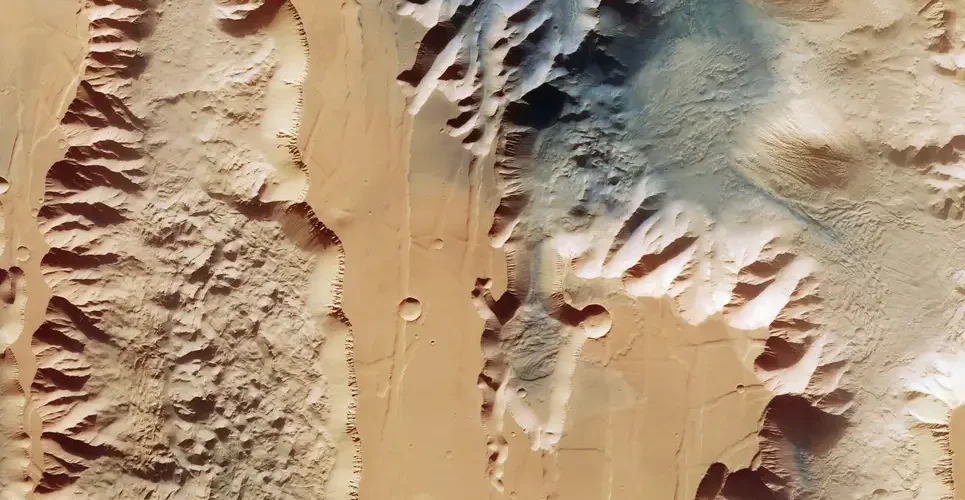Mars Express Orbiter Sees a Massive Canyon System
The Mars Express Orbiter recently imaged a canyon system on the Red Planet that is nearly 10 times longer, 20 times wider, and five times deeper than Earth’s Grand Canyon.
火星快车轨道飞行器最近拍摄到了这颗红色行星上的峡谷系统,该系统比地球大峡谷长近10倍,宽20倍,深5倍。
The massive feature is called Valles Marineris (Mariner Valleys) and it’s the largest canyon system in the solar system. According to an ESA release, if it were on Earth, the canyon system would stretch from the northern tip of Norway to the bottom of Sicily.
这个巨大的地貌被称为“水手谷”,是太阳系中最大的峡谷系统。根据欧空局发布的消息,如果它在地球上,峡谷系统将从挪威的北端延伸到西西里岛的底部。
Mars Express has been orbiting the Red Planet since 2003 and has captured remarkable views of the planet’s geological features from above. The satellite is also charged with studying the Martian atmosphere and mapping the planet’s mineral makeup.
火星快车自2003年以来一直围绕这颗红色行星运行,并从上方拍摄到了这颗行星的地质特征。该卫星还负责研究火星大气和绘制火星矿物组成图。
The orbiter also peered below the planet’s surface, thanks to its MARSIS instrument; those observations have shined light on what lies beneath the Martian south pole.
多亏了它的MARSIS仪器,轨道飞行器还可以窥视行星表面的下方;这些观测揭示了火星南极下面的情况。
The recently imaged system is characterized by two main trenches, the 522-mile Ius Chasma and the 500-mile Tithonium Chasma. The trenches are over 4 miles deep in some places. The area of the chasms was imaged by the orbiter’s High Resolution Stereo Camera on April 21, in what was the spacecraft’s 23,123rd orbit around Mars. The orbiter took true color images of the chasmata, showing us how the structures would appear to the naked eye.
最近成像的系统以两条主沟为特征,522英里的Ius Chasma和500英里的Tithonium Chasma。有些地方的壕沟超过4英里深。4月21日,轨道飞行器的高分辨率立体相机在该航天器环绕火星的23123轨道上拍摄到了裂口区域。轨道飞行器拍摄了chasmata的真彩色图像,向我们展示了这些结构在肉眼下的外观。
Read more at Gizmodo.com
在Gizmodo.com阅读更多











